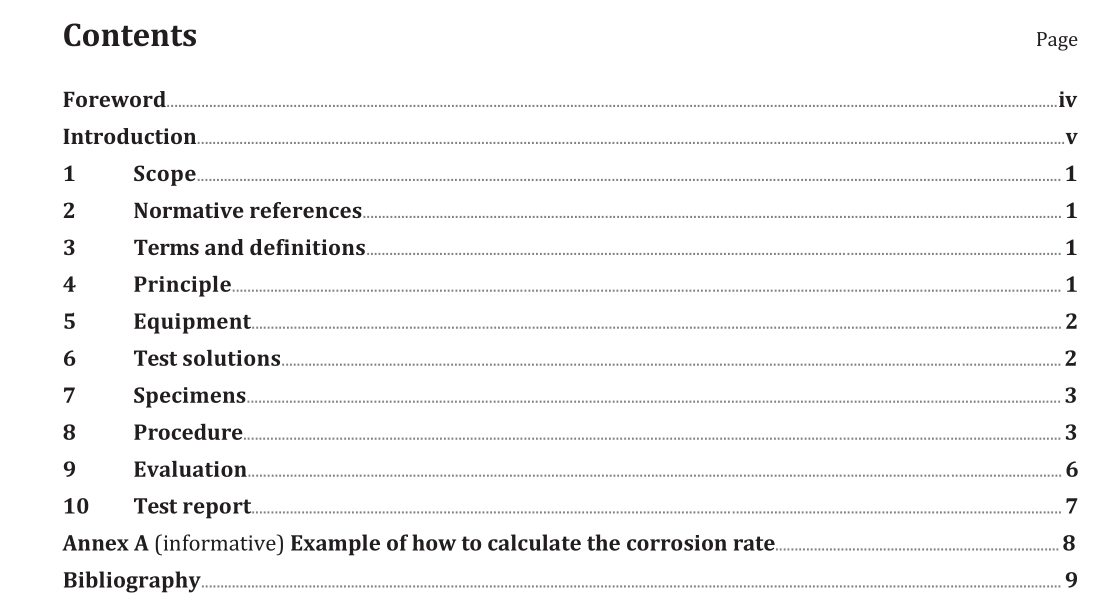BS ISO 18069:2015 pdf download.Corrosion of metals and alloys — Method for determination of the uniform corrosion rate of stainless steels and nickel based alloys in liquids
1 Scope
This International Standard specifies the measurements of the corrosion rate of uniform corrosion for stainless steels and nickel based alloys in the intended liquids and the ability for the material to passivate after activation. This method is intended to be used for estimation of the uniform corrosion rate in liquids, under atmospheric conditions, for the chemical industry under specific environmental conditions and not as a qualification test. It can also be used to determine iso-corrosion diagrams and at which temperature the corrosion rate exceeds 0,1 mm/a. This International Standard is not intended for excessive corrosion rates above 1 mm/a since an even higher corrosion rate indicates that the stainless steel is not suitable in the application. This International Standard is not intended to be used for solutions containing halides, especially chlorides, since these might cause localized corrosion.
2 Normative references
The following documents, in whole or in part, are normatively referenced in this document and are indispensable for its application. For dated references, only the edition cited applied. For undated references, the latest edition of the referenced document applies.
ISO 3696, Water for analytical laboratory use — Specification and test methods
ISO 8044, Corrosion of metals and alloys — Basic terms and definitions
ISO 17864, Corrosion of metals and alloys — Determination of the critical pitting temperature under
potientiostatic control
3 Terms and definitions
For the purposes of this document, the terms and definitions given in ISO 8044 apply.
4 Principle
4.1 This method involves immersion of the material in the intended liquid after the required temperature has been reached. Mass measurements are carried out before and after each of three sequential periods,24 h, 72 h, and 72 h of immersion.
Period 1: 24 h of immersion in the liquid. When exposed to acid, the passive layer will change composition during this period. In addition, contaminations on the specimens will be removed during this period.For this reason, the first period is normally not accounted for when evaluating the corrosion rate.
Period 2: 72 h of immersion in the liquid. This period determines the corrosion rate.
Period 3: 72 h of immersion in the liquid with activation of the specimens. This period determines the corrosion rate of a specimen with an active surface and the ability to repassivate in the specific liquid.
4.2 The weight, before and after each period, is measured, the mass loss during each period is calculated,and the average corrosion rate is determined for periods 2 and 3.
4.3 In the beginning of the third period, the specimens shall be activated, according to the procedure described in 8.5, to investigate whether the material has the ability to repassivate in the specific conditions.
BS ISO 18069:2015 pdf download
